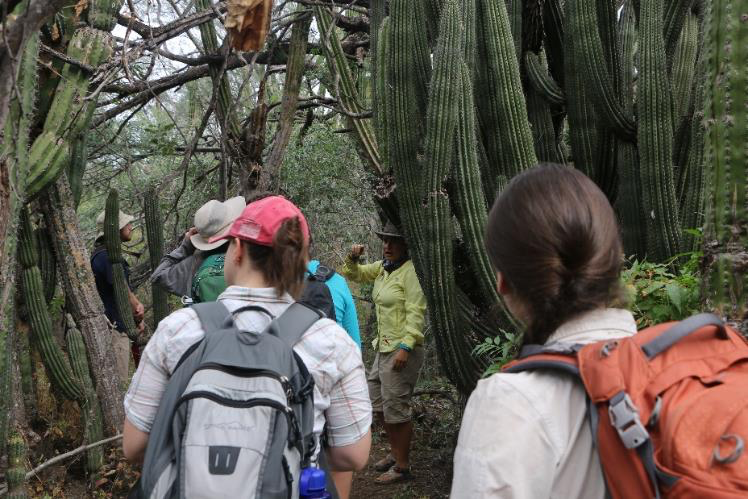
[Para leer en español, haga clic aquí]
In January, a group of 16 students traveled to Todos Santos, Mexico for wildlife conservation course FW 382 through the Department of Fish, Wildlife, and Conservation Biology. Located at the base of the foothills of the Sierra de La Laguna Mountains, on the Pacific Coast of Baja California Sur, Todos Santos is home to many endemic species, creating a unique learning environment for students.
The group stayed at the CSU Todos Santos Center for 12 days as they explored the marine and desert ecology of Baja California Sur and engaged in discussion with local ecologists and natural resource managers.
The following are excerpts from student reflection papers written as part of the course curriculum.
To see more photos from this trip, click here.
Casey A. Barby, senior, Fish, Wildlife and Conservation Biology
“Fruits are a very unique part of any plant species bearing them – they are grown to be lost, eaten or swept away and at a great deal of energy cost to the host plant – but as with the flower, are vital to the species fitness and existence. The fruit or take home portion of the trip abroad was, and is, truly the best. The knowledg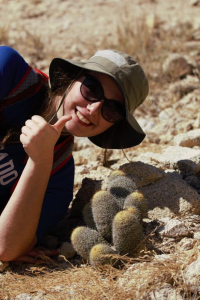 e earned daily about an ecosystem not found in the mountains or plains of Colorado bestowed upon the college attendee through physical experience versus a textbook in a classroom thousands of miles away from its area of description cannot be put into words of value. The wealth of knowledge obtained through everyday interaction from the behemoth Whale Sharks to the rock isopods scurrying across a rock ocean side coupled with some of the most knowledgeable guides, cannot ever be replaced by a book and can only be learned through an abroad trip such as this one.
e earned daily about an ecosystem not found in the mountains or plains of Colorado bestowed upon the college attendee through physical experience versus a textbook in a classroom thousands of miles away from its area of description cannot be put into words of value. The wealth of knowledge obtained through everyday interaction from the behemoth Whale Sharks to the rock isopods scurrying across a rock ocean side coupled with some of the most knowledgeable guides, cannot ever be replaced by a book and can only be learned through an abroad trip such as this one.
Though the knowledge was a major part of the trip and a large embodiment of the fruit, there is but one more region in the fruit to mention – the friendships. The friendship of another fellow group of individuals with likeminded goals and love of nature has yet to, and seemingly never will be, a prize that can hold a describable value. The close quarters and daily formality with a group of strangers was soon replaced with planned hangouts and personal talks that have yet to be disrupted by a return to the place where, for a couple of months, strangers sat timidly in the world’s smallest classroom awaiting an adventure that turned out even more then hoped it to be.”
Jordan Castle, senior, Biological Science
“Some members of the group, including myself, went whale watching and learned about the breeching habits of the humpback whales. Why do male humpbacks breech? For the same reason any mammal (including humans) does almost anything – in order to attract a mate. Breeching is not only a way of “showing off” to females but also a way to compete with fellow males. The male humpback will breech in order to land on top of the other male in order to fight with him physically. I have been whale watching with humpbacks before, but this was by far the closest I have ever gotten to one. I learned that whale watching in the wild is the best way to observe any species of whale, not in captivity.
Not all of our activities involved marine animals – we also went bird watching. The very first thing I learned about bird watching was just how physically demanding it was. Before I never would have thought of bird watching as being a physical sport, but the birds are fast, and a bird watcher must also be fast if he or she wants to observe them. After a little while of bird watching, I started to learn the different species of birds and how to observe them.”
Brice Culhane, senior, Fish, Wildlife and Conservation Biology
“My original intent on coming on this trip was to learn about marine conservation and to be able to interact with the people and practice my Spanish. Reflecting back on the trip I believe I achieved both these goals and so much more. Growing up I was never really an ‘outdoorsy’ kind of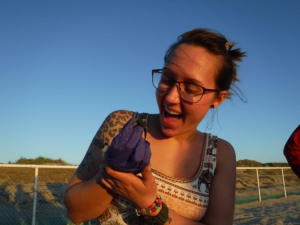 person – when I declared my major in Fish, Wildlife and Conservation Biology most of my family questioned my sanity, as they thought I couldn’t handle all the outdoorsy things this major would require, like hiking or camping in tents.
person – when I declared my major in Fish, Wildlife and Conservation Biology most of my family questioned my sanity, as they thought I couldn’t handle all the outdoorsy things this major would require, like hiking or camping in tents.
If I’m being honest, I was a little nervous about this aspect myself, but in doing this trip I think I proved to myself and my family that not only can I camp and hike and snorkel, but I actually really enjoyed it. The experiences I had in Mexico have deepened both my understanding and my appreciation for the diversity of wildlife, and I feel I am better prepared for any future career I may have in this field because of it.”
Elizabeth Enoch, junior, Fish, Wildlife and Conservation Biology
“The good thing about unknown territories is that they prove to be extremely educational. What better way to learn about how an estuary may change in the next coming years due to climate change than to see it firsthand? The biggest effect of learning about environmental issues and the social issues that either arise from or are the cause of them and simultaneously witnessing it in person is that the perspective is much more provoking.
In the same sense, it is easier to learn a skill that is used in the field and immediately be required to utilize it in a real-life setting. Being taught how to handle being face-to-face with a species you’ve never encountered before, such as sea lions, is a more effective lesson when there is an actual mother sea lion preventing you from getting too near to her cubs. Learning in this setting as opposed to in front of a screen leaves a lasting effect that is much more beneficial for future educational and work purposes.”
Amy Huff, senior, Zoology
“The trip to Baja California Sur, Mexico was life-changing for me. Since I had never been out of the country prior to this trip I had no idea what to expect. To make matters worse I was traveling over the border with people I hardly knew. I didn’t know what to expect in customs, what the food would be like, or how the trip would amaze me and make me question many things that I held near and dear.
The first thing that it made me realize is how much there was to see outside of my comfort zone – and country. It’s one thing to take classes and learn about the diversity that oceans and seas have to offer and a completely different en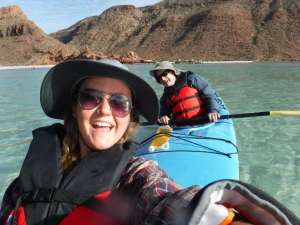 tity to swim with whale sharks, sea lions, and a wide range of other animals within a few days. This experience allowed me to truly appreciate how important the oceans are to the earth as well as some of the effect that humans currently have on these animals. It was a tragedy to see sea lions with huge wounds due to fishing nets, or to hear about developments that have taken precious nesting grounds for several species of sea turtles.
tity to swim with whale sharks, sea lions, and a wide range of other animals within a few days. This experience allowed me to truly appreciate how important the oceans are to the earth as well as some of the effect that humans currently have on these animals. It was a tragedy to see sea lions with huge wounds due to fishing nets, or to hear about developments that have taken precious nesting grounds for several species of sea turtles.
When we stayed on Espirito Island I was able to appreciate true beauty. The crystal clear water and all the wildlife in the area was incredible. I had never seen scorpions, puffer fish, or eels in the wild before and on the island I was able to see all these animals and many more daily. This trip opened up my eyes to the many things that I still have to see in this world and all the adventures that await me.”
Jasmine Kowalczyk, junior, Fish, Wildlife and Conservation Biology
“As I stepped off the small plane into the warm weather that instantly turned cold from the air conditioning set on high throughout the terminal, I looked outside. The view was phenomenal, a blazing sun, clear skies, and a mountain range that Colorado could not compare too – I had arrived in Baja California Sur. All the doubting about if the trip would be worth the cost and time and maybe I had signed up too soon to travel abroad as I was coming into my second semester at Colorado State University instantly fell off my shoulders.
Before the trip had even started or come to an end I knew it was all worth it. I signed up for the fairly short two-week abroad course wanting experience with exotic wildlife. As the trip came closer and closer, I became excited for the unknown of the beauty I was about to see in Mexico, as well as the hands on I was going to have with these creatures that mostly were endemic to that specific area of Mexico. From the study abroad trip there were three main subjects that stuck with me, 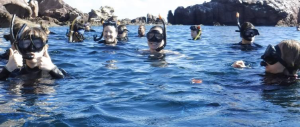 ones that have had a lasting impression and have reassured me as to why I am going into the career field of wildlife biology. The first is releasing baby sea turtles into the ocean, the second is swimming with whale sharks and sea lions, and lastly, staying on a secluded island surrounded by wildlife and an amazing staff and in a welcoming city that made me feel as if I were home.”
ones that have had a lasting impression and have reassured me as to why I am going into the career field of wildlife biology. The first is releasing baby sea turtles into the ocean, the second is swimming with whale sharks and sea lions, and lastly, staying on a secluded island surrounded by wildlife and an amazing staff and in a welcoming city that made me feel as if I were home.”
Yorke McGillivray, sophomore, Fish, Wildlife and Conservation Biology
“Even though I am back in America, I am not ready to close the chapter on my Baja experience just yet. It takes a lot of hands and minds to create collaborative change, and for Mexico, I want to continue to be a part of that process in the interest of wildlife conservation. If education is to be at the heart of the Tres Santos village concept, I would like to find ways to work with CSU in designing outreach programs with the purpose of promoting sustainable ideas, and I want to learn how to become a better public speaker for such a community. I also p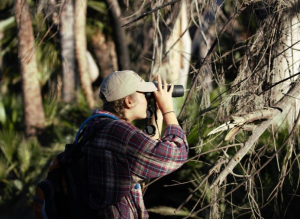 lan to remain in contact with Asupmatoma’s turtle researchers to learn more about marine wildlife management of somewhat elusive species and to help in the digestion of years’ worth of data on their local sea turtle populations.
lan to remain in contact with Asupmatoma’s turtle researchers to learn more about marine wildlife management of somewhat elusive species and to help in the digestion of years’ worth of data on their local sea turtle populations.
I would highly recommend this program to anyone interested in modern day conservation because students get to experience some of the most breathtaking wonders of our natural world while having the opportunity to observe, in person, the movement to preserve them. This is the kind of trip that connects you with the field and for me, it affirmed my passion for marine and coastal work. The trip also presented a rare occasion to explore new environments and identify new areas to focus my career in. It was an experience I am sure will be an influential guide as I progress in a career for global conservation.”
James Scarlett, senior, Fish, Wildlife and Conservation Biology
“The cactus sanctuary was a unique place to be able to visit. Learning that it was a rancher who decided to fence in his property to conserve the ecosystem instead of using it for ranching was inspiring. I liked being able to try the fruit from a sour pitaya. It was unlike anything I have ever tasted. What I really took out of this particular day was that it only takes one person to do something to help conserve ecosystems. Later in the day we traveled to an old mining town. It was interesting to see how a once very wealthy town had now become much poorer. Many of the streets were paved with brick and there was a piano museum which had huge grand pianos, but now it just seems like a ghost town.”
Megan Senour, senior, Fish, Wildlife and Conservation Biology
“This experience was simply life changing for me. Not only did I learn about desert and marine ecology and get to explore a new place, I made some really amazing friends on this trip. I will have these memories for the rest of my life. This trip also really solidified for me that I want to do marine work after I graduate from CSU. It also made me realize that I really want to go back to Todos Santos, which I hope I can do through the semester long program next spring. I am really glad I was given the opportunity to go down to Mexico this past winter break and look forward to using my newly learned skills from this experience in the future.”
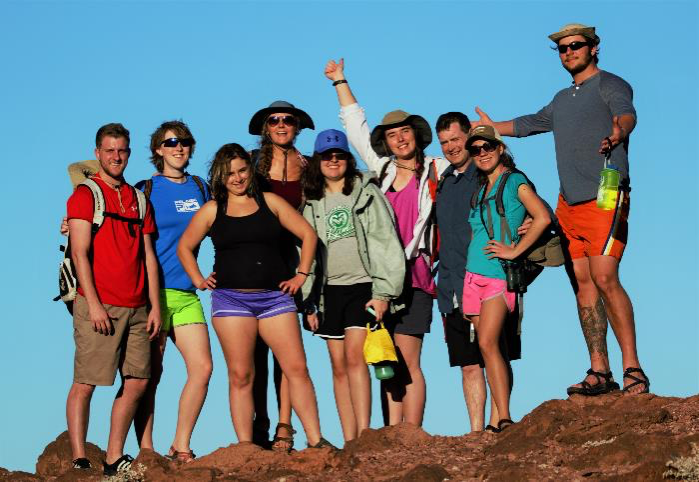
About the CSU Todos Santos Center
The Colorado State University Todos Santos Center is the university’s first international location and is core to CSU’s mission of teaching, research, service, and outreach.
The Center provides opportunities for CSU students and Baja California Sur residents to collaborate with local partners and businesses to identify needs, conduct research, and produce impactful outcomes.
CSU’s vision in Todos Santos is to cultivate generations of global citizens and to be a part of creating thriving communities through collaboration, experience, and exchange of knowledge in areas such as agriculture, infectious disease, elementary education, environmental and social sustainability, wildlife ecology, veterinary medicine, and public health.